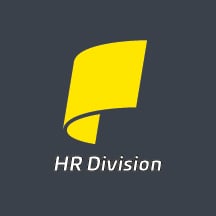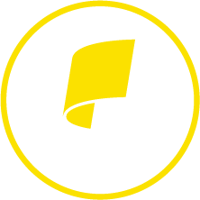Next in our Changing Workplace series, our Director of HR explores how to navigate the era of flexible work. Here's how to make it work for you.
When the world hit pause in 2020, the way we worked instantly changed. Overnight, kitchen tables turned into desks, and video calls replaced in-person meetings. Today, the idea of "back to normal" feels like a thing of the past.
As Director of Human Resources, I’ve experienced firsthand how flexible work has reshaped the workplace. It wasn’t just about laptops and Wi-Fi. The transition sparked a fundamental change in how we connect, collaborate, define success, and get our work done. Flexibility is no longer about where you work; it’s about how you work.
What is Flexible Work?
Generally, flexible work options fall into two models, hybrid and remote.
🖥️Hybrid work allows employees to divide their time between working onsite and remotely, typically from home. It offers a balance of face-to-face collaboration and the autonomy of remote work.
💻Remote work, on the other hand, is entirely off-site. Remote employees typically work from home, or even another state, and may not have access to a physical office.
"Flexibility is no longer about WHERE you work; it’s about HOW you work."
- Jada Magiera, SHRM–SCP, Director of Human Resources, Propel HR
A Balancing Act of Changes
Flexible work is not a one-size-fits-all model. It’s a balancing act – one between flexibility, consistency, autonomy, and, most of all, trust.
As we settle into this new rhythm, we’re discovering that the flexible work era brings exciting new opportunities, but it also comes with its fair share of challenges. Let’s look at some of the most significant changes affecting the workplace as well as strategies to stay ahead.
1. Rethink What Success Looks Like
We're moving from simply tracking hours to tracking outcomes. It’s no longer about a physical presence at work. Instead, it’s about delivering results.
 Strategy: Define what great work looks like in your business. Set clear, measurable goals, and check in regularly.
Strategy: Define what great work looks like in your business. Set clear, measurable goals, and check in regularly.
Give your teams the autonomy to decide how they reach those goals, while holding everyone accountable.
2. Win the Talent Game
Flexibility is no longer a perk to attract talent – it’s an expectation. It’s a trend that’s gained traction over the years. Today’s job seekers want to work to live, not live to work. They are more likely to ask about your flexible work policies before inquiring about salary.
Strategy: Unless you have something else more compelling to attract and keep top talent, flexibility matters. If you want to win the talent game, it’s time to embrace flexible work options and make it part of your brand.
3. Commit to an Equitable Experience for All
 It’s easy to unintentionally favor in-office over remote workers when it comes to access, visibility, and opportunity.
It’s easy to unintentionally favor in-office over remote workers when it comes to access, visibility, and opportunity.
Strategy: Build equity into the day-to-day. Mandate a video option for meetings, assign moderators to ensure everyone has an equal voice and opportunity, and train managers to lead inclusive hybrid and remote teams. Ensure that benefits, workplace policies, training opportunities, and other resources are available to every employee.
4. Establish Communication Norms
Miscommunication is inevitable when team members are scattered. What used to be a casual hallway check-in now must be intentional.
Strategy: Establish communication norms and take advantage of tools such as Microsoft Teams, Google Chat, or Slack. Define expectations around responsiveness and documentation to ensure nothing slips through the cracks.
➡️➡️ READ MORE: The Changing Workplace: What's Next for DEI?
5. Keep People Connected
Relationships fuel performance. Without the lunchroom or post-meeting chat, teams can feel fragmented.
Strategy: Be intentional about connection. Start a “just for fun” Slack channel, host virtual coffee breaks, or plan occasional in-person meetups when possible. Don’t underestimate the power of small moments.
6. Encourage Real Work-Life Balance
 Working from home often blurs the lines between personal and professional life. For many, unplugging is a real challenge.
Working from home often blurs the lines between personal and professional life. For many, unplugging is a real challenge.
Strategy: Encourage boundaries. Block out meeting-free hours during the week. Encourage your managers to model healthy behavior - just because you can work late doesn’t mean you should.
7. Keep Company Data Safe
Hybrid and remote work pose new vulnerabilities and security risks.
Strategy: Invest in training and equip employees with the tools and protocols they need to keep company data safe, no matter where they work.
8. Make Office Space a Go-to Hub
 Office design matters more than ever. If people come in to take Zoom calls, you’ve entirely missed the mark.
Office design matters more than ever. If people come in to take Zoom calls, you’ve entirely missed the mark.
Strategy: Redesign your space to prioritize collaboration. Think open work areas, whiteboard walls, and comfortable lounges so the office becomes a go-to hub for connection and creativity. Make the office a place people want to be.
9. Help Leadership Embrace Change
Change is never easy, especially for senior leadership who’ve built careers around traditional management styles. However, it’s time to let go of the “line in the sand” thinking, where occupying a seat in the office at a set time is the measure of success. Flexible work has proven that’s not the case.
➡️➡️ READ MORE: What the OBBBA Means for Your Small Business
Strategy: Not everyone wants to return to the office or log into another video call. Some employees thrive in a remote setting, while others miss the in-person connection. Start by understanding their needs and offering options where possible, supporting change with empathy rather than mandates. And watch your people soar!
FLEXIBLE WORK IS HERE TO STAY
 Workplace cultures used to grow organically, through hallway chats, lunch outings, and Friday huddles. Now, we need to build it intentionally.
Workplace cultures used to grow organically, through hallway chats, lunch outings, and Friday huddles. Now, we need to build it intentionally.
If your business values innovation, what does that look like on a Zoom call? If collaboration is at the core of your culture, how do you foster it across different time zones?
There’s no doubt that flexible work isn’t going anywhere. As HR leaders, we’re in a unique position to design a workplace that’s more inclusive, more human, and more effective than what came before. That means we need to be flexible too and adapt to the many changes in our workplace.
"Flexible work is not a one-size-fits-all model. It’s a balancing act – one between flexibility, consistency, autonomy, and, most of all, trust."
- Jada Magiera, SHRM–SCP, Director of Human Resources, Propel HR
If you're feeling uncertain about what comes next, you’re not alone. And you don’t have to figure it out on your own. We’re here to help businesses like yours navigate the changes happening in your workplace with confidence.
🔶The Changing Workplace Series
Stay tuned for Part 3 of our business series, the Changing Workplace, where we’ll tackle other important topics impacting your workplace, such as what's next for DEI, evolving mental health policies, and new labor laws. For the latest updates, follow us on Facebook, LinkedIn and X
ABOUT THE AUTHOR
 Jada Magiera, SHRM–SCP, Director of Human Resources for Propel HR and a trusted advisor to businesses navigating the evolving workplace. With more than 15 years of experience in HR strategy, compliance, and employee engagement, she’s passionate about helping businesses build an inclusive workplace where people love to work.
Jada Magiera, SHRM–SCP, Director of Human Resources for Propel HR and a trusted advisor to businesses navigating the evolving workplace. With more than 15 years of experience in HR strategy, compliance, and employee engagement, she’s passionate about helping businesses build an inclusive workplace where people love to work.
ARE YOUR BENEFITS KEEPING UP?
As healthcare costs continue to rise, employees want — and expect — benefits that reflect their values and needs. So, before you renew or make changes to your employee benefits program, check out our 2025 Benefits Benchmark Report. This new webinar offers clear, actionable insights based on one of the most comprehensive studies in the country.
You’ll learn:
🌐How national and regional trends are reshaping benefits
🌐What today’s workforce really wants
🌐How your benefits compare — and where you may be overspending
🌐Smart strategies for cost control and talent retention
Don’t Guess — Get the Data!
Watch the 2025 Benefits Benchmark Report ▶️HERE
And if you need help making sense of your options, call us at (800) 446-6567 — we're here to help.
About Propel HR. Propel HR is an IRS-certified PEO that has been a leading provider of human resources and payroll solutions for 25 years. Propel partners with small to mid-sized businesses to manage payroll, employee benefits, compliance and risks, and other HR functions in a way that maximizes efficiency and reduces costs. For more information, visit propelhr.com










